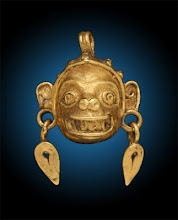From Arbuckle's Complete Cornet Method (~1880?).
THE CROOKS OR PIECES TO ADJUST THE TONE OF THE INSTRUMENT.
With each Cornet are furnished several crooks and pieces, or bits, to put the instrument into different keys, viz: the smallest straight piece marked Bb; the longest piece marked A; the smallest crook Ab; the next largest crook G; and the longest crook F. In England we seldom make use of any other than the two straight pieces, Bb and A, the proper Cornet tone being confined to those two keys, and the two smaller crooks, Ab and G. In France and other countries, however, they write for the F Cornet, and sometimes as low as E and Eb; the Cornet then becomes, in fact, a valve trumpet. The most desirable keys for the learner to use are the A and Ab.
TUNING THE VALVES OF THE CORNET.
Attached to each valve is a slide for the purpose of tuning the valve, when it is necessary to crook the instrument in any other key than Bb. The middle, or shortest valve, is never moved for any key not lower than G. You will perceive by the table, page 10, that [E above middle C] can be played with an open note or the first and second valves. To tune the first valve, sound the open note E, and then press the two valves down and sound the same note; if it accords with the open note, the first valve is in tune; if not, move the slide of the first valve until it does accord. As the third valve is equivalent to the first and second valves, it can be tuned in the same way; or, after tuning the first valve, you will perceive in the table, page 10, that the first and third valves produce the sound [middle G]. Sound the open note, and then press down the valves, and by moving the slide of the third valve make it accord in the same manner as before.
Also, a Conn and Dupont Four-In-One cornet designed to play in Eb, C, Bb, and A, and a patent for it - the forerunner of the Victor's pitch-adjusting system.
Subscribe to:
Post Comments (Atom)


No comments:
Post a Comment